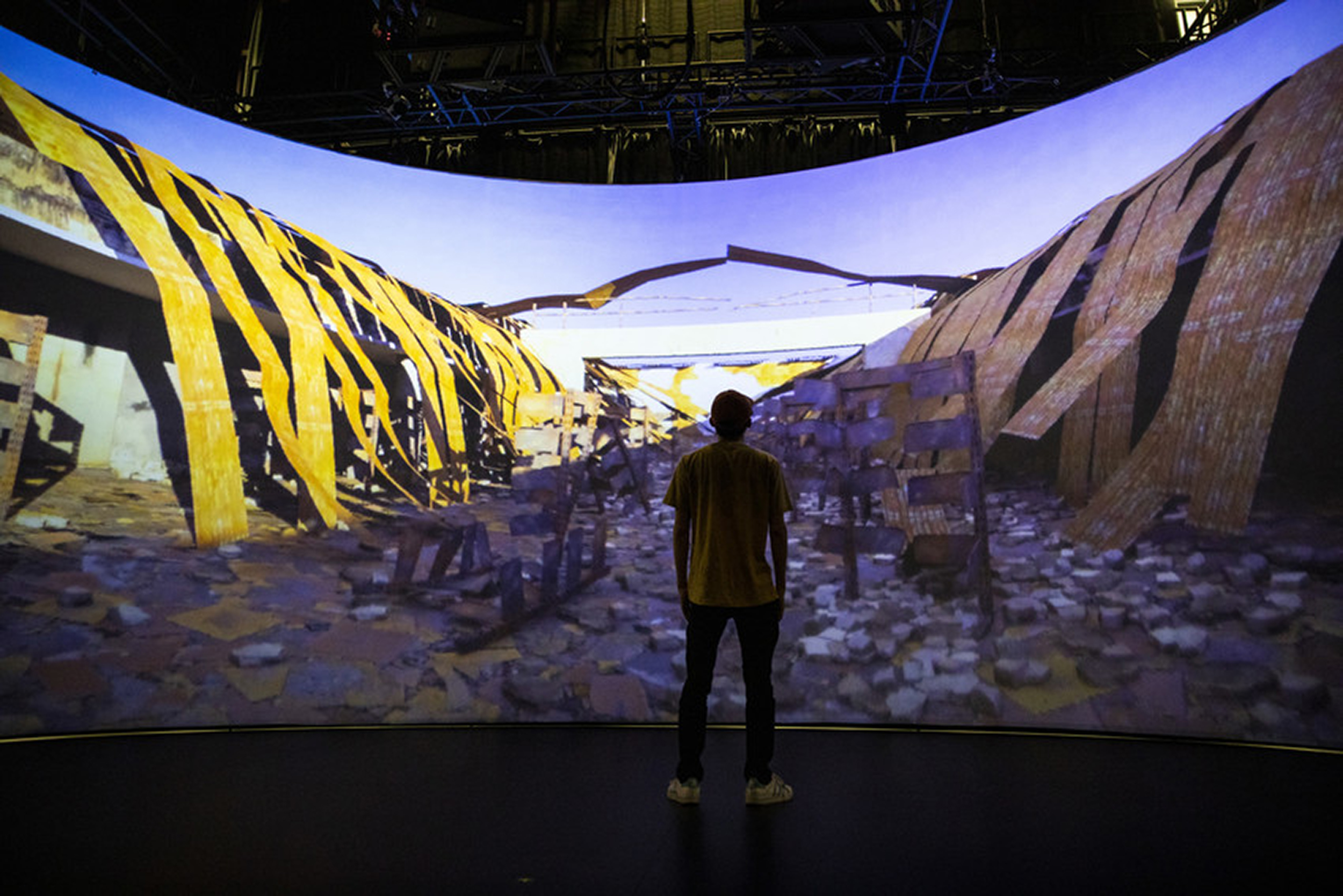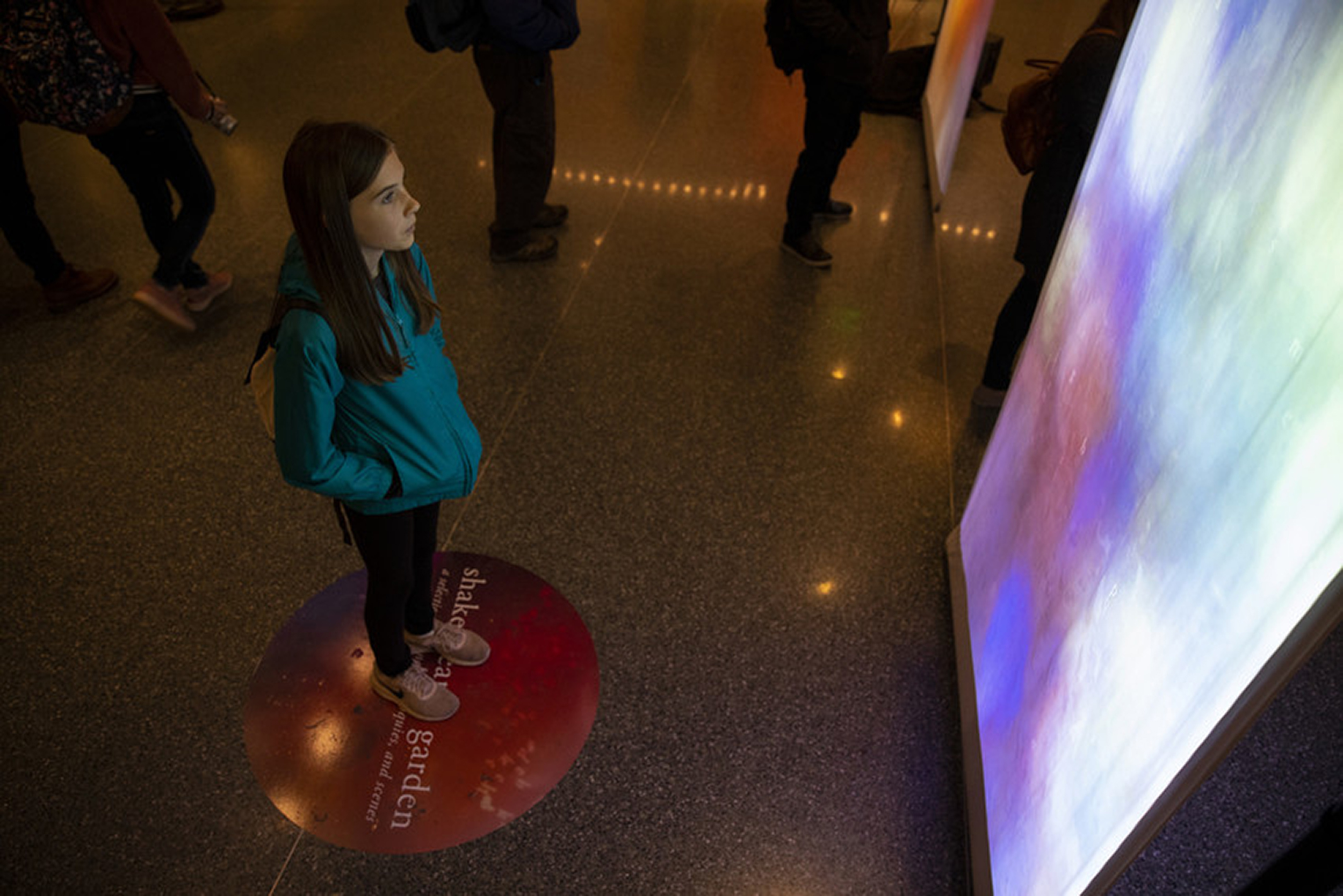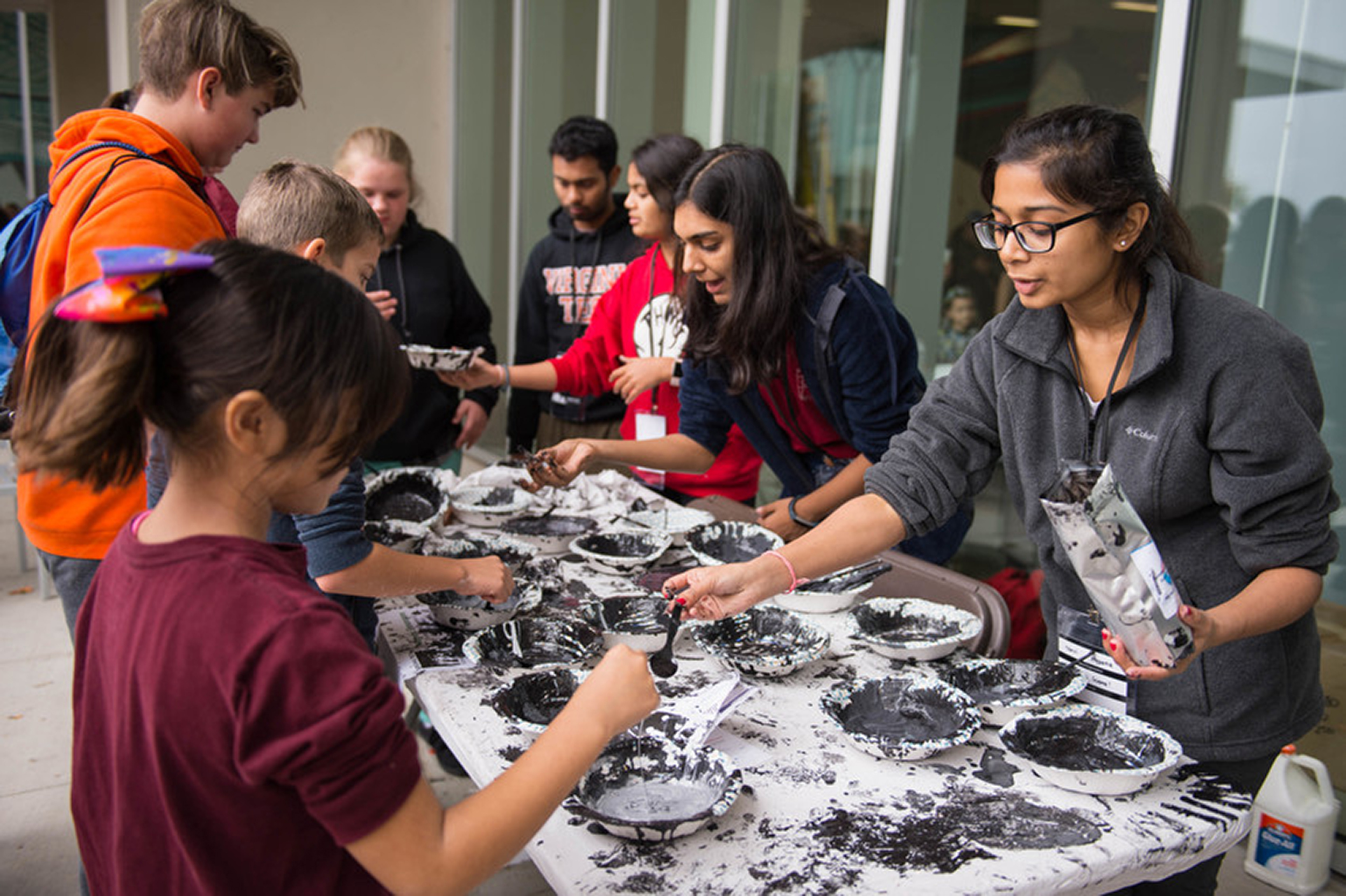by Mason Adams
On the eastern edge of Virginia Tech’s Blacksburg campus, where the university intersects with downtown, the view of the future is clear.
Here, the university is mapping out a playground for the innovators, inventors, and makers who will build the world of tomorrow. Finding solutions for complex problems that range from water conservation and food supply chains to energy demands and transportation congestion will require expertise from many sources. For a global community, there is no one-size-fits-all strategy. By creating spaces that bring together poets and engineers and artists and chemists and historians, Virginia Tech is leveling the field, advancing cross-cultural research and development, and emphasizing the combined strengths of science, technology, business, and the humanities.
The $250 million Creativity and Innovation District capitalizes on existing programs and facilities while creating new spaces and making large-scale changes to others. The goal: to galvanize innovation—from conception to commercialization.
“The whole Creativity and Innovation District is becoming something quite incredible,” said Ben Knapp, founding executive director of the Institute for Creativity, Arts, and Technology (ICAT). “I don’t really know of any other university district across the country that is merging town, gown, and live-learn communities that span the arts, design, the sciences, and engineering.”
Virginia Tech’s Creativity and Innovation District will be anchored by the Moss Arts Center; the Institute for Creativity, Arts, and Technology, which includes the Center for Human-Computer Interaction and the Center for Research on SEAD Education; the School of Performing Arts, including Theatre 101; and the School of Visual Arts, including the Armory Gallery.
Squires Student Center, Newman Library, the Graduate Life Center at Donaldson Brown, and the Media Building will round out the district. Several will retain their traditional functions while offering enhanced spaces to foster creativity and innovation. The Media Building, however, will undergo a comprehensive renovation to support the initiative.
“What we’re developing with the physical district and technologies is all about student learning and giving students the opportunity to develop in creative ways,” said Ruth Waalkes, associate provost for the arts and executive director of the Moss Arts Center. “It’s really about being able to engage with people across difference. That can mean art students working with engineers or computer scientists or collaborating across different languages or cultural practices.”

Xindi Liu, an M.F.A. candidate, works on final touches to his project, “The ashes and the portal” in the Cyclorama at the Cube in the Moss Arts Center.
According to Cal Ribbens, head of the Department of Computer Science, “identifying a particular region of campus and intentionally creating space for this kind of learning will create more opportunities and a bigger impact that will affect entrepreneurship, partnerships with the private sector, and recruitment of talented students, staff, and faculty.
“[The district] engages students in tackling broad problems that span disciplines. It’s important for students to get exposure working with people who think differently, who communicate differently, because they’re going to be part of diverse teams throughout their working lives,” Ribbens said.
Although the Creativity and Innovation District exists in a defined location on campus, the environment supports technology and other features that reach far beyond Blacksburg.
“Bridge spaces” will allow companies, students, faculty, and other scholars to work in close proximity to create, incubate, and bridge ideas into viable businesses. The collaborations will connect to existing initiatives in Blacksburg, Roanoke, and the Northern Virginia.
“It’s not a district that says, ‘We’re going to do this particular project,’” said Knapp. “Instead, we’re saying, ‘If you’re interested in the creative process, from imagination to innovation, this is where you come to work with a like-minded community, no matter what your disciplinary origins.’”
The district was conceived by Thanassis Rikakis, professor of bioengineering and performing arts and former provost, as a geographic extension of President Tim Sands’ Beyond Boundaries vision—specifically the concept of students and faculty from a variety of backgrounds living and working together in a shared community. The idea was to combine areas of strength for Virginia Tech so that individuals working across disciplines can come together and create. Additionally, Rikakis wanted the district in Blacksburg to engage with Virginia Tech’s outposts in Roanoke and Northern Virginia.
“We created aspirational plans where the Creativity and Innovation District would become a key feeder of innovation talent for the metropolitan D.C. area, and the partnerships and resources that would develop in metropolitan D.C. would significantly support the district in Blacksburg.”
Thanassis Rikakis, professor of bioengineering and performing arts
With a proven track record for projects that transcend traditional boundaries, ICAT stands as an example of how connections provide value for university researchers, students, and private partners. The institute fosters creativity and critical reflection in a living illustration of Sands’ Beyond Boundaries vision.
Attracting scholars from around the globe who work side-by-side in such campus facilities such as the Cube at the Moss Arts Center, ICAT extends the reach of the district to the world. In April, ICAT partnered with the Smithsonian Lemmelson Center for Invention and Innovation to present the ACCelerate: ACC Smithsonian Creativity and Innovation Festival at the National Museum of American History in Washington, D.C. The festival showcased creative projects emerging from the nine public and six private schools that make up the Atlantic Coast Conference.
Additionally the Creativity and Innovation District will expand creative influences from the eastern side of campus. A 596-bed residence hall is among the buildings planned for the area. The new construction, which is expected to be finished by summer 2021, will house two living-learning communities: Studio 72, for students interested in the arts and design, and Innovate, for those who want to pursue entrepreneurship. Student-athletes will also live in the residence hall.
Nicky Cruz, a rising junior pursuing degrees in fashion merchandising and design and multimedia journalism with a minor in popular culture, lived in Studio 72, which is currently located in Pritchard Hall, during the 2018-19 academic year.
“Studio 72 is open to all majors, so we have a wide range of students studying different subjects,” Cruz said. “A result of this wide mix of majors is being able to see how different people process and experience creativity and art. Seeing how art, science, engineering, or any other major differs with respect for creative process has introduced me to new ways of thinking and new points of view.”
Ella Davis, a rising junior majoring in geoscience, chose Studio 72 as a way to keep in touch with her artistic interests even as she pursued a science degree. Davis said the blend of students pushes her to communicate more effectively about her scientific work and has helped her better understand how concepts transcend disciplines.
“I think my favorite thing I’ve discussed with other people so far is how we all use very similar vocabularies, but we all have situational definitions,” Davis said. “How I talk about the geometry of rock beds and faults uses the same words an architecture major might when talking about the geometry of their designs, but we mean two completely different things. It’s the same situation when I talk to some of my more musically inclined friends about styles of music versus styles of dance.”
The new residence hall will boast 30,000 square feet of public space devoted to artistic, performance, and research-based experiences to support engagement and meaningful connections within the district, Blacksburg, and the world.
Plans for the facility include apartments for residential faculty. The special living arrangement, which exists in other environments across campus, will allow instructors to be fully immersed and to engage with students in ways that will enrich the community.
While the eastern side of campus is abuzz with construction and planning activities associated with the developing district, Virginia Tech leaders, faculty, and researchers are already recognizing the value of these creative collisions. The resulting projects and their outcomes will define and describe success for the district.
What happens when great ideas meet great minds? The Creativity and Innovation District brings together scientists and artists committed to expanding knowledge. These researchers may employ new methods or interpret results through seemingly disparate lenses.
Research Projects

Festivalgoers interact with the Shakespeare's Garden: An Immersive Sound Stroll station during the Virginia Tech and Smithsonian’s National Museum of American History ACCelerate: ACC Smithsonian Creativity and Innovation Festival.
Shakespeare’s Garden

Festivalgoers interact with the Shakespeare's Garden: An Immersive Sound Stroll station during the Virginia Tech and Smithsonian’s National Museum of American History ACCelerate: ACC Smithsonian Creativity and Innovation Festival.
This theatre installation used the spatial audio capabilities of the Cube to create a specialized immersive sound and visual experience. Participants meander along a path through the virtual space, listening to Shakespearean texts performed by Virginia Tech students.
Ruth Walkes: “Anything you can do to take classic work like Shakespeare and thrust it into the future here in the Cube is really dynamic. That is something that’s going to happen only here at Virginia Tech. With Shakespeare’s Garden, you walked into the space and it was transformed. Visually and in terms of sound, you just got it. It was easy to walk in and understand what the potential is.”
Academic Areas
School of Performing Arts and School of Visual Arts
Prosthetic Sensors
A Virginia Tech professor and a team of undergraduate student researchers have made inroads in integrating electronic sensors with personalized 3D-printed prosthetics, which could one day lead to more affordable electric-powered prosthetics.
Industrial and Systems Engineering
Traffic Light Sonata
The Traffic SONATA [Traffic Signal Operation with Neuro-fuzzy Acoustic Tuning Applications] project aims to apply principles of musical improvisation to traffic flow.
Civil and Environmental Engineering and the School of Performing Arts
Honeybee Dances
Two assistant professors and their teams decoded the language of honeybees in a way that allows scientists around the world to interpret the insects’ highly sophisticated and complex communications. The researchers discovered a universal calibration that translates honeybee communications across sub-species and landscapes. By deciphering the messages encoded in the insects’ movements, called waggle dances, the teams hope to better understand the insects’ preferred forages and the locations of these food sources.
Entomology and Mechanical Engineering
BelleIIVR
An ICAT grant funded the creation of BelleIIVR, which allows the study of subatomic particle physics using virtual reality. The team used the Cube to create a virtual supercollider that allowed an untethered, locomotive virtual-reality exploration of particle physics. Now, the team has created a computer version and is working on one for mobile devices.
Industrial Design, Architecture, Computer Science, Human-Computer Interaction, Gerontology, Business
Using High-Performance Computing to Boost Student Creativity
A partnership between the Division of Information Technology, the School of Visual Arts, and ICAT, this advanced rendering class blends architecture, industrial design, and interior design. Students boost their technology skills, learning advanced techniques to create complex animations.
Events
ACCelerate: ACC Smithsonian Creativity and Innovation Festival
ACCelerate, a partnership between Virginia Tech and the Smithsonian’s National Museum of American History that was first launched in 2017, celebrates creative exploration and research at the nexus of science, engineering, arts, and design. At the 2019 festival, which featured research projects from universities across the Atlantic Coast Conference, nearly 62,000 visitors interacted with innovators and experienced new technologies.

Gooey times at the Science Festival.
Virginia Tech Science Festival
Since 2014, the Virginia Tech Science Festival has offered dozens of free hands-on, minds-on learning interactive booths and activities to showcase physics, space, engineering, communication, geology, health and medicine, history, transportation, computers, chemistry, and more. Nearly 5,000 visitors of all ages attend the festival each year. The university funds transportation to enable school children from underserved areas to attend the festival.
ICAT Creativity and Innovation Day
ICAT Creativity and Innovation Day demonstrates Virginia Tech’s latest innovations combining science, engineering, arts, and design through dozens of experiences, performances, demonstrations, expo-style exhibits, and a panel discussion.
Cube Fest
Cube Fest features spatial music, immersive aural experiences, and 3D audio technology. The annual festival brings together international audio technology experts, computer engineers, music technology experts, musicians, and composers who present lectures, conduct workshops, and perform original compositions specifically created for high-density loudspeaker arrays.
Classes and Spaces
The Cube
The Cube is a highly adaptable space for multidisciplinary, collaborative research and experimentation. Both a state-of-the-art theatre and a high-tech laboratory, the four-story Cube offers visualization, motion tracking, and immersive 3D audio. Users can experience total immersion in virtual realities. Researchers have developed immersive environments in the Cube that allow them to interact with anything in the world in real time, from the smallest subatomic particle to the largest building. The Cube is home to one of the largest multichannel audio systems in the world, with 150 independently operating loudspeakers.
The Sandbox
The Sandbox is an idea incubator. Teams meet to brainstorm, discuss visions, and roll up their sleeves to start projects. The flexible meeting space encourages collaborative creativity with moveable furniture, dry-erase boards, and a projection array.
Digital Studios
Students use the Digital Arts and Animation Studio, located in the library, to access high-end tools used in the production of digital film, web design, and animation. In the Digital Interactive Sound and Intermedia Studio, researchers and students merge contemporary technology with traditional performance to pursue new forms of artistic expression and multimedia art.
Media Building
The former school building is being transformed through a process in which architecture students and faculty members are embarking on their own “living lab adventure.” The students and faculty are creating spaces to meet their own needs.
Service/User Experience Class
A demonstration of Virginia Tech’s Beyond Boundaries initiative, this class brings together students in industrial design, computer science, and business, and is co-taught by faculty from each discipline. Teams of students create projects to solve problems related to disability and aging. The class emphasizes Virginia Tech’s motto, Ut Prosim (That I May Serve).